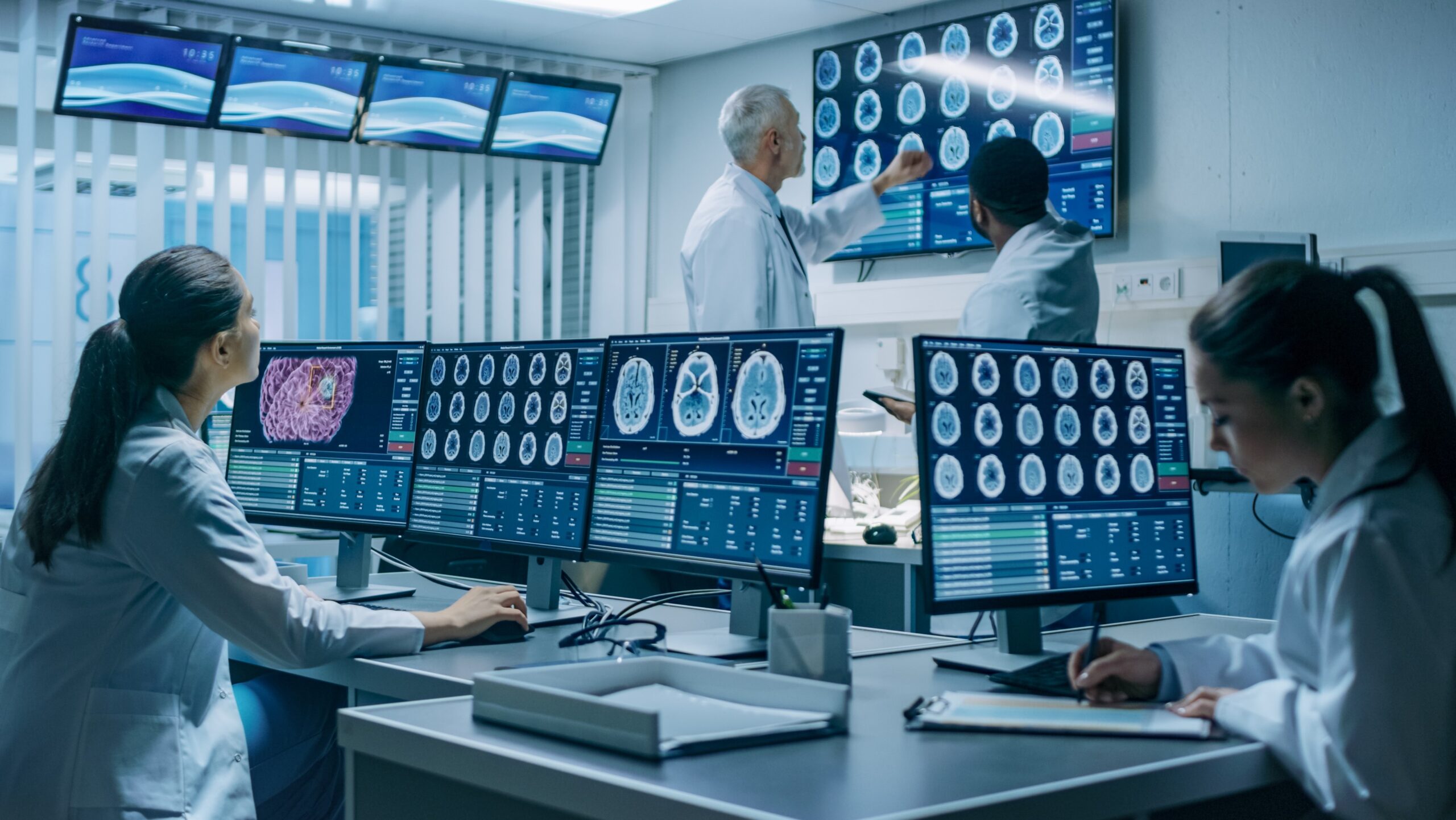

Radiogenomics’ Potential in Neuro-Oncology Clinical Studies
This paper reviews published evidence of the contribution that radiogenomics have to neuro-oncology clinical studies to raise awareness about its use, potential and challenges. It does so by revealing how this ground-breaking technique can improve scientists’ understanding of glioblastomas (GBMs).
GBMs are a severe form of brain tumours known for their aggressiveness and high heterogeneity. Traditional MRI techniques allow for strong phenotypic variations to be assessed, but more complex genetic variations are hardly characterised, leaving a lot of questions about GBMs’ biological drivers unanswered. Radiogenomics is a field of imaging which can offer answers to these questions. It assesses gene expression levels using molecular probes which can be associated with well-known imaging techniques, such as MRI or PET. The data can then be directly correlated to radiological and histological features, giving a comprehensive understanding of the tumours’ metabolism, physiological heterogeneity and structural fingerprint. A coherent radiomics and genomic association map provides scope for a non-invasive evaluation of genomic signatures in patients with GBM.
Current publications have so far demonstrated consistent beneficial outcomes from the entry of radiogenomics in neuro-oncology. It offers a way to modernise radiology by elucidating new genetic pathways but also validating novel imaging biomarkers which could streamline the development of next-level therapeutics.
Abstract:
Glioblastomas (GBM) have one of the poorest prognoses of any cancer. Current cutting-edge research aims to pave the way for new non-invasive methods of diagnosing brain tumours through innovative imaging techniques and genomic information from tumour samples. Over the past few years, various whole genome sequencing analysis has identified biomarkers and thus gradually changed the way of diagnosing brain tumours. In this context, MRI is a versatile imaging technique as it can provide multifaceted information derived from both morphologic and functional imaging biomarkers (radiomics) in brain. Radiogenomics is attempting to probe any correlation between radiological and histological features and hopefully assess the physiological heterogeneity and genetic alterations paving the way to a holistic approach of the tumour metabolic, pathophysiological and structural fingerprint. This systematic review aims to summarise the current published evidence of radiogenomics in GBM and also raise awareness for future research in this field.’
Read full paper here.
About Image Analysis Group (IAG)
IAG, Image Analysis Group is a unique partner to life sciences companies. IAG leverages expertise in medical imaging and the power of Dynamika™ – our proprietary cloud-based platform, to de-risk clinical development and deliver lifesaving therapies into the hands of patients much sooner. IAG provides early drug efficacy assessments, smart patient recruitment and predictive analysis of advanced treatment manifestations, thus lowering investment risk and accelerating study outcomes. IAG bio-partnering takes a broader view on asset development bringing R&D solutions, operational breadth, radiological expertise via risk-sharing financing and partnering models.
Learn more: wp1.ia-grp.com
Reach out: imaging.experts@ia-grp.com
Follow the Company: Linkedin
